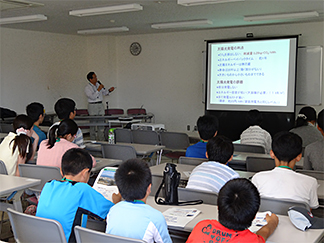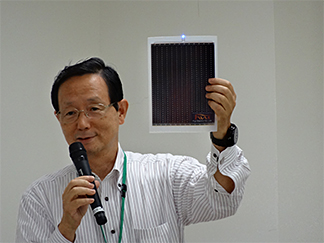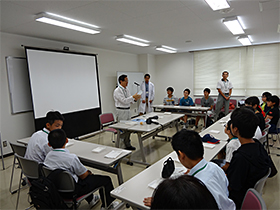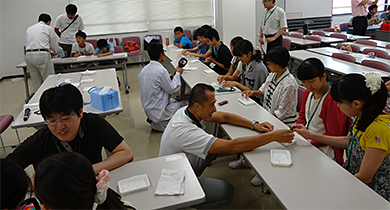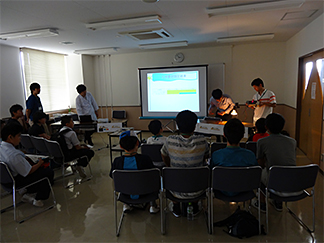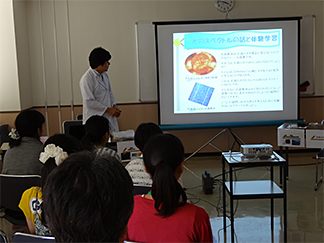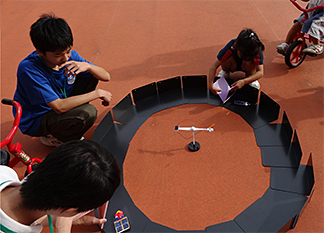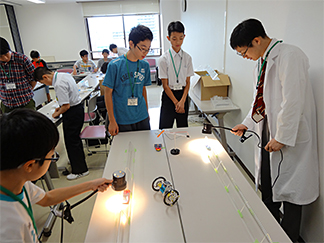The 2nd Solar Cell Workshop for Junior High School Students
“The workshop on solar cells for junior high school students” was held on Saturday, September 6th, 2014 at the Koriyama city general support center for children. This event was hosted by the JST and sponsored by the board of education of Koriyama city. There were 18 junior high school students, 11 elementary school students, teachers from junior high schools and also some parents who participated in this event.
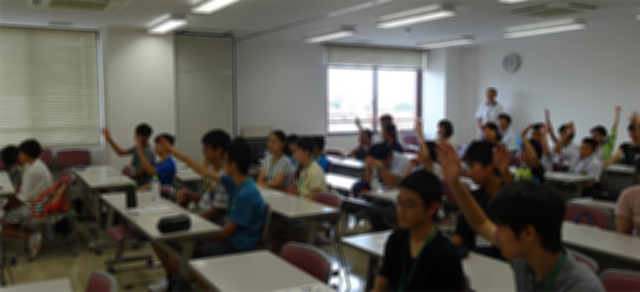
Ms. Miyoko Watanabe, Senior Director of JST, who is in charge of Promoting Science Education and Public Understanding of Science and Technology, gave an opening speech. Then Professor Makoto Konagai at the Tokyo Institute of Technology, who is also Research Director of our project “FUTURE-PV Innovation” gave a lecture on the solar cell with regard to how it works, its merits and related research. There was also an introduction session for the Fukushima Renewable Energy Institute in Koriyama, AIST, which opened in April 2014. This institute is an integrated research center where this project is based.
After the lecture, three different stations were set up where they could take part in a variety of experiments and the participants spent their time at each station.
At the station for Professor Konagai's science show, an experiment was conducted where a piece of ice was cut with a thin plate of silicon carbide, that has similar properties to silicon which is a major material for solar cells. In this experiment, a thermographic image was used to verify one of the properties of silicon carbide, which has high thermal conductivity. It is significantly higher than that of stainless steel or glass and the participants understood that, for this reason, a silicon carbide board can cut a piece of ice.
At the demonstration station, where the participants were able to learn the relationship between the different wavelengths of sunlight and power generation, they observed that the solar cells made of crystalline silicon could generate power even within the invisible infrared range. They learned that different types of solar cells use different types of rays to generate power.
At the craft station, the participants assembled mini solar powered cars and ran an experiment where they tried to operate the cars. Unfortunately it became cloudy when they tried the experiment, and the cars did not move outdoors. However, when they used the special indoor course where they can shine lights on the cars, they learned that the angle of the light and also the distance from the light source made a difference in the speed.
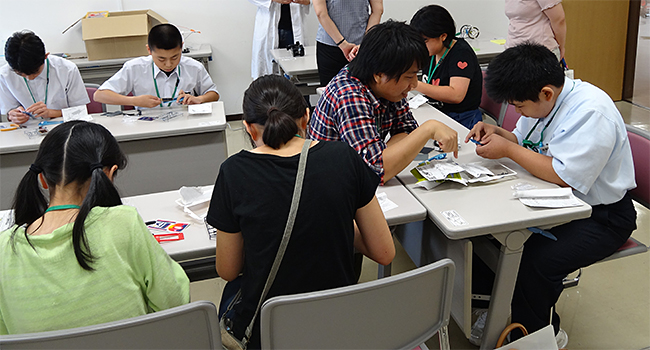
At the end of the workshop, Professor Konagai handed a 'future doctoral degree certificate' to each participant.
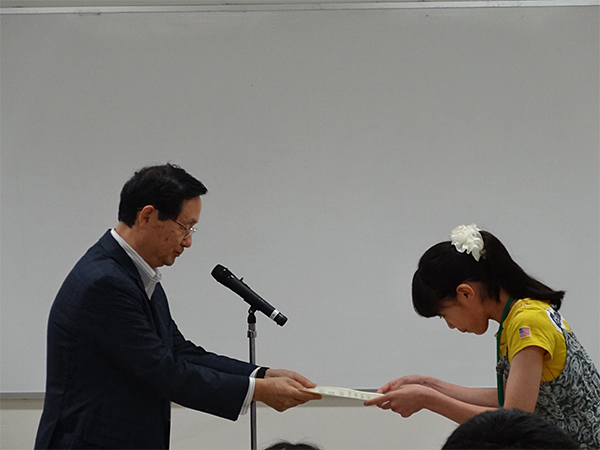
It was quite impressive that so many participants came up to ask questions of Professor Konagai after the workshop.
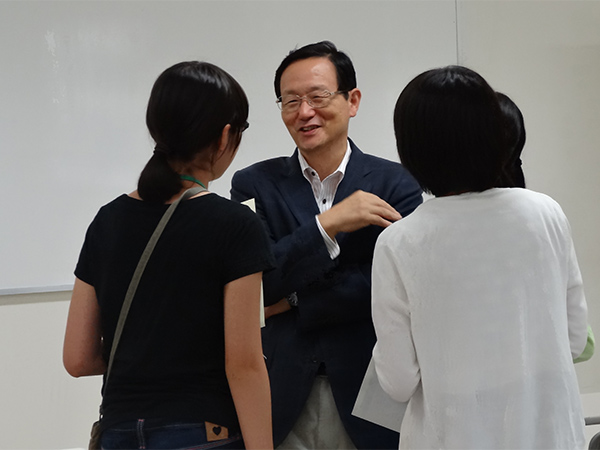
We plan to continue activities to promote interest in our project and solar cells for the general public including the children in the neighbouring area of the research center.

